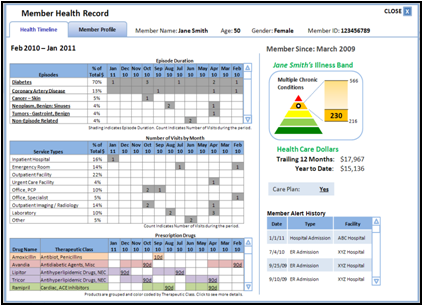
In 2008, Cisco launched their LifeConnection’s onsite health center which uses a Patient- Centered Medical Home model. Today, it supports over 42,000 employees and their families at Cisco’s corporate campus in San Jose, CA.
Cisco’s LifeConnections' Center offers primary and pediatric care integrated with care services including disease/condition management, health coaching, mental health, pharmacy, physical therapy and chiropractic as well as acupuncture services.
Cisco now has two physical LifeConnections' Health Centers, one at their headquarters and a second location at the Cisco Bangalore, India campus. In addition, they operate a telehealth location in the Raleigh-Durham area of North Carolina.
Employees access LifeConnections’ services online for health management. “Within our Cisco LifeConnections' portal, our employees and their families can schedule appointments in real-time, view their medical records, communicate securely with their physicians and even send their doctor an attached document such as a food or exercise log”, explains Katelyn Johnson, Manager, Integrated Health at Cisco Systems.
Cisco’s approach supports the findings from a recent Accenture Connected Health Pulse Survey which found that most patients (90%) want to use technology to self-manage which includes accessing their medical information, booking their doctor’s appointments and refilling their medications. The survey also revealed that patients do not want to give up the interaction with their doctor.
Technology Transforms the Patient Experience
Working closely with employees and families, Cisco designed the LifeConnections’ Health Center to bring convenience, better care and transparency to the consumer.
Through ongoing interviews with patients, Cisco has heard feedback from consumers who:
“Do not want to be burdened by the administration of healthcare”
“Want technology to take away what I don’t like to do (i.e. clip board,
discharge payment)”
“Want to spend more time with my physician”
Cisco has used this insight to determine ways to leverage technology within the LifeConnections’ Health Center to increase patient satisfaction including:
Kiosk: Patients come into the Health Center and use a tablet to have a “paperless, self-service, check in” including verifying demographic information, paying co-pays and signing consent forms, taking less than five minutes of their time.
Flat Screen Monitors in Care Suite: Within the patient-centric care suites, the patient and physician sit side by side to view and discuss health information projected on the flat screen such as the medical record with the latest vitals and lab results, x-rays and educational content about the patient’s condition. Cisco emphasizes the importance of providing transparency to the patient by showing them their medical record, in real time, during the visit.
HealthPresence in Care Suite: Cisco has recently partnered with Stanford Hospital and Clinics to enable patients to access specialty care (tele-dermatology) through the use of Cisco’s own telemedicine solution called HealthPresence. A nurse assists the patient in the LifeConnections’ Health Center while the Dermatologist connects from the Stanford Outpatient center. Cisco has found that connecting specialists with patients using this solution offers greater access to specialty care, reduces appointment wait times, and improves patient satisfaction.
Matching Technology to the Employee Profile
Cisco has put healthcare technology in place to meet the needs and profile of their employees and families.
“We are a high technology company and our many of our employees are engineers who literally live on-line. Their average age is 42 years. Our employees expect our healthcare experience to mirror the way they work – which is surrounded by technology. Specifically, they want technology to help enable care, remove access barriers and overall enhance their experience as a patient.” shares Sharon M. Gibson, Director Healthcare Business Transformation at Cisco. “Not only do they want to see more information about their health status but they want to see trending data for themselves to better understand how their health stats change over time and how their behavior impacts those results.”
“Our employees are busy and always on the move. They want to take care of their health in an efficient way. Soon, we will also offer patients the option of e-visits with their doctors through WebEx, for example”, explains Sharon. “Online or e-visits would help engage employees in their health, whether from home or even remote sites, and bring the convenience that they demand”.
 care collaboration,
care collaboration,  educating consumers about health and wellness,
educating consumers about health and wellness,  self- management health tools in
self- management health tools in  Behavior Change Health & Wellness,
Behavior Change Health & Wellness,  Data Driven Health Engagement,
Data Driven Health Engagement,  Decision Support eHealth,
Decision Support eHealth,  Patient Centered Medical Home,
Patient Centered Medical Home,  Patient Decision Support,
Patient Decision Support,  Patient Engagement,
Patient Engagement,  Patient Portal,
Patient Portal,  Personalization eHealth,
Personalization eHealth,  shared decision making ehealth
shared decision making ehealth 






